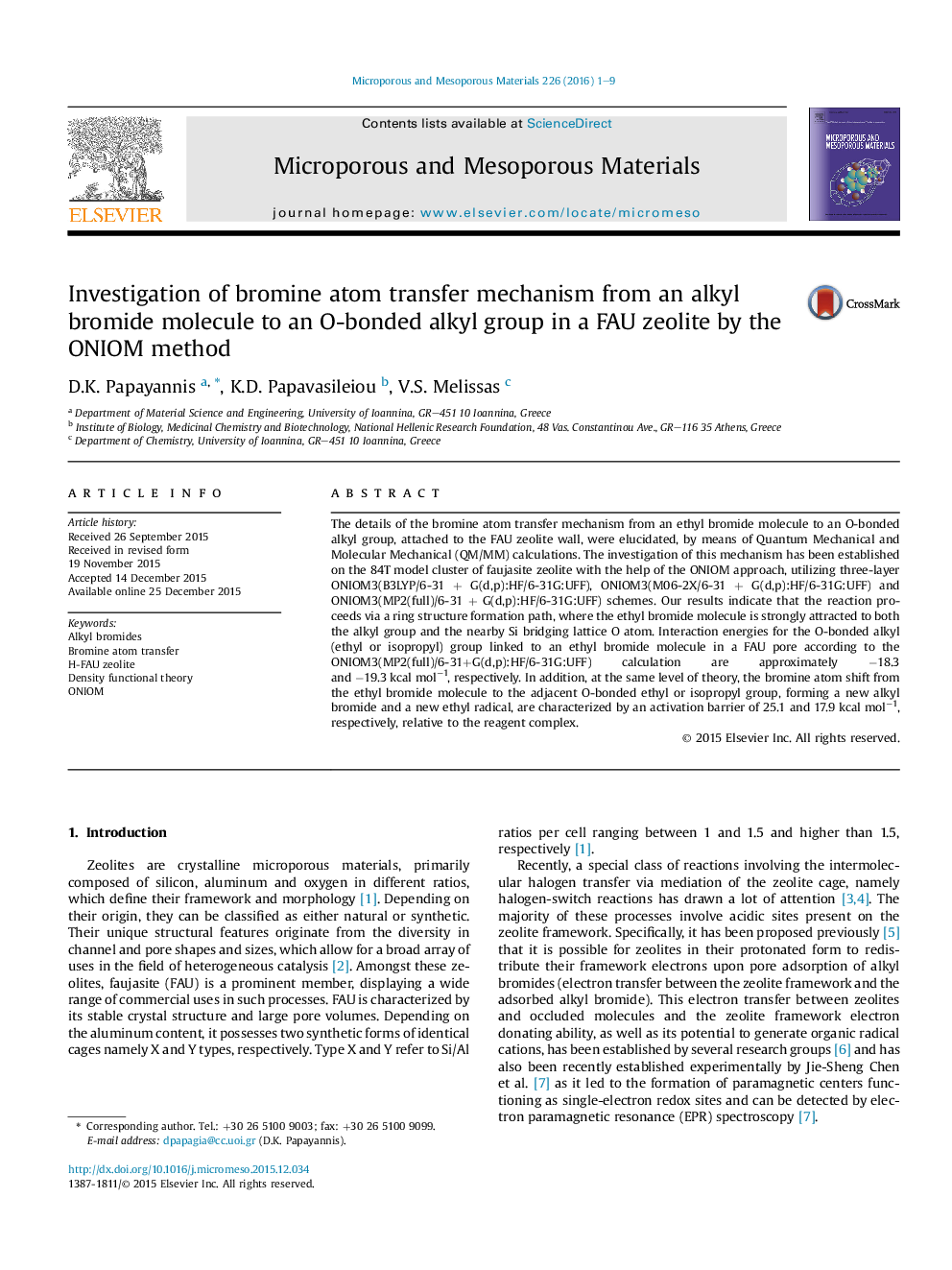| کد مقاله | کد نشریه | سال انتشار | مقاله انگلیسی | نسخه تمام متن |
|---|---|---|---|---|
| 72164 | 49013 | 2016 | 9 صفحه PDF | دانلود رایگان |

• The zeolite participation via the 84T quantum cluster strongly catalyzes the halogen transfer.
• Substitution of a-alkoxy carbon by methyl enhances catalysis by more than 7.0 kcal/mol.
• Agreement of ONIOM3 MP2 and M06-2X results allows exploration of similar processes at a lower computational cost.
• NBO analysis confirms experimental link of Br shift to framework electron transfer from O atom to bridging Si atoms.
The details of the bromine atom transfer mechanism from an ethyl bromide molecule to an O-bonded alkyl group, attached to the FAU zeolite wall, were elucidated, by means of Quantum Mechanical and Molecular Mechanical (QM/MM) calculations. The investigation of this mechanism has been established on the 84T model cluster of faujasite zeolite with the help of the ONIOM approach, utilizing three-layer ONIOM3(B3LYP/6-31 + G(d,p):HF/6-31G:UFF), ONIOM3(M06-2X/6-31 + G(d,p):HF/6-31G:UFF) and ONIOM3(MP2(full)/6-31 + G(d,p):HF/6-31G:UFF) schemes. Our results indicate that the reaction proceeds via a ring structure formation path, where the ethyl bromide molecule is strongly attracted to both the alkyl group and the nearby Si bridging lattice O atom. Interaction energies for the O-bonded alkyl (ethyl or isopropyl) group linked to an ethyl bromide molecule in a FAU pore according to the ONIOM3(MP2(full)/6-31+G(d,p):HF/6-31G:UFF) calculation are approximately −18.3 and −19.3 kcal mol−1, respectively. In addition, at the same level of theory, the bromine atom shift from the ethyl bromide molecule to the adjacent O-bonded ethyl or isopropyl group, forming a new alkyl bromide and a new ethyl radical, are characterized by an activation barrier of 25.1 and 17.9 kcal mol−1, respectively, relative to the reagent complex.
Figure optionsDownload as PowerPoint slide
Journal: Microporous and Mesoporous Materials - Volume 226, 15 May 2016, Pages 1–9